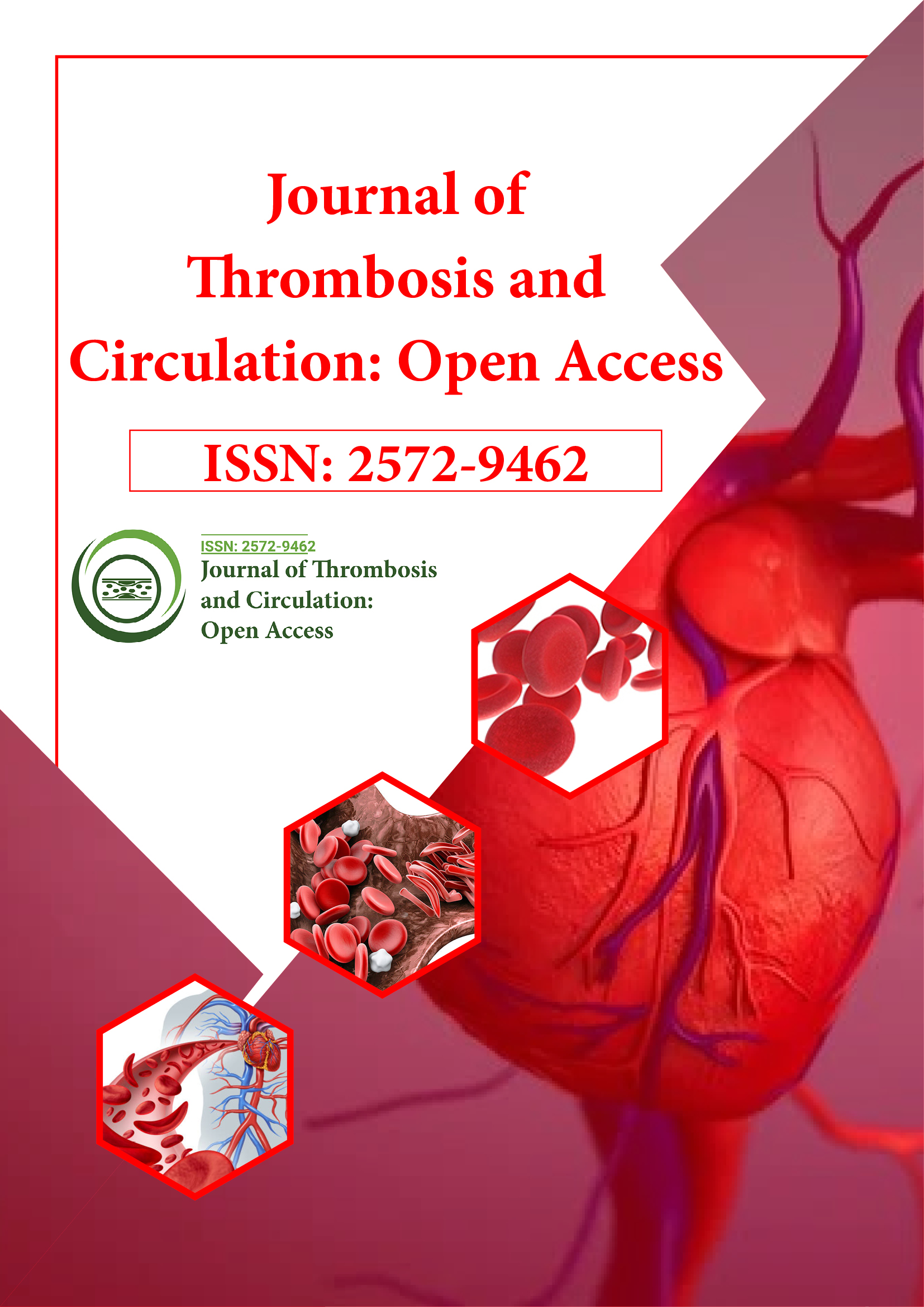Indexed In
- RefSeek
- Hamdard University
- EBSCO A-Z
- Publons
- Google Scholar
Useful Links
Share This Page
Journal Flyer

Open Access Journals
- Agri and Aquaculture
- Biochemistry
- Bioinformatics & Systems Biology
- Business & Management
- Chemistry
- Clinical Sciences
- Engineering
- Food & Nutrition
- General Science
- Genetics & Molecular Biology
- Immunology & Microbiology
- Medical Sciences
- Neuroscience & Psychology
- Nursing & Health Care
- Pharmaceutical Sciences
Opinion Article - (2024) Volume 10, Issue 4
The Role of Parallel Stenting in Restoring Blood Flow in Acute Aortic Thrombosis
Maxwell Carter*Received: 29-Nov-2024, Manuscript No. JTCOA-24-28429; Editor assigned: 02-Dec-2024, Pre QC No. JTCOA-24-28429 (PQ); Reviewed: 16-Dec-2024, QC No. JTCOA-24-28429; Revised: 23-Dec-2024, Manuscript No. JTCOA-24-28429 (R); Published: 30-Dec-2024, DOI: 10.35248/2572-9462.24.10.288
Description
Acute paravisceral aortic thrombosis is a critical vascular emergency that poses a significant risk of morbidity and mortality. Immediate intervention is often required to restore blood flow to vital organs, including the kidneys, liver and intestines, to prevent ischemic damage. Traditionally, treatment options for this condition have included open surgical repair and endovascular procedures such as fenestrated or branched endografts. However, these approaches may not always be feasible, particularly in emergent situations where time and resources are limited. In such cases, parallel stenting has emerged as a promising technique, providing a minimally invasive solution to maintain perfusion to vital arteries in the presence of complex aortic pathology. While parallel stenting offers numerous advantages, it also presents certain challenges that need to be carefully considered.
Parallel stenting, also referred to as the "chimney," "periscope," or "snorkel" technique, involves placing covered stents alongside the aortic endograft to preserve blood flow to critical branch arteries, such as the celiac, superior mesenteric and renal arteries. This approach is especially valuable in cases where fenestrated endografts are unavailable or impractical due to the urgency of the situation. The technique allows for rapid restoration of perfusion, making it a suitable option for patients with acute paravisceral aortic thrombosis who require urgent revascularization. Compared to traditional open surgery, parallel stenting is associated with lower morbidity and quicker recovery times, which is particularly beneficial for patients who are not candidates for more invasive procedures.
Despite its benefits, parallel stenting is not without its risks and limitations. One of the primary concerns is the potential for endoleaks, particularly type Ia endoleaks, which occur when blood flows outside the stented lumen, creating a persistent channel between the endograft and the parallel stents. Although various techniques such as balloon molding and adjunctive embolization have been employed to mitigate this risk, endoleaks remain a significant concern and can complicate long-term outcomes. Additionally, the use of parallel stents can lead to increased flow turbulence and hemodynamic changes within the aorta, which may result in thrombogenicity, stenosis, or occlusion of the parallel stents over time. In patients with acute paravisceral aortic thrombosis, who are often in a hypercoagulable state, the risk of stent thrombosis must be carefully managed.
Another challenge is the long-term durability of parallel stents. While the technique offers a rapid solution to restore perfusion in emergency situations, the patency of parallel stents remains uncertain. Studies have shown that in some cases, these stents are more prone to restenosis and occlusion compared to traditional endovascular grafts. This raises important questions about the long-term effectiveness of parallel stenting in maintaining blood flow to visceral arteries. Furthermore, the presence of multiple stents in a confined space can potentially increase the risk of complications, including renal dysfunction, gastrointestinal ischemia and endograft migration.
Despite these concerns, parallel stenting remains a valuable tool in the management of acute paravisceral aortic thrombosis, particularly when time constraints or patient-specific factors make other endovascular options impractical. The technique allows for quick restoration of perfusion, which is essential in preventing irreversible organ damage. However, it is important for vascular surgeons to carefully assess the risks and benefits of parallel stenting on a case-by-case basis. Factors such as the extent of thrombosis, the patient's overall health and the presence of other comorbidities must be taken into account when determining the most appropriate course of action.
In conclusion, parallel stenting for acute paravisceral aortic thrombosis offers a viable alternative to more invasive surgical options, providing rapid restoration of blood flow and improving patient outcomes in urgent situations. While the technique has its limitations, including the potential for endoleaks, stent occlusion and long-term patency concerns, it represents an important advancement in endovascular therapy.
As technology continues to evolve, parallel stenting may become an increasingly effective tool in the management of complex aortic diseases, improving the prognosis for patients with acute paravisceral aortic thrombosis and other similar conditions. Careful patient selection, meticulous technique and ongoing research will be important in optimizing outcomes and minimizing complications associated with this promising intervention.
Citation: Carter M (2024). The Role of Parallel Stenting in Restoring Blood Flow in Acute Aortic Thrombosis. J Thrombo Cir. 10:288.
Copyright: © 2024 Carter M. This is an open-access article distributed under the terms of the Creative Commons Attribution License, which permits unrestricted use, distribution, and reproduction in any medium, provided the original author and source are credited.
